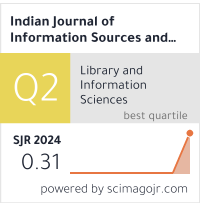Performance Analysis of Five U-Nets on Cervical Cancer Datasets
DOI:
https://doi.org/10.51983/ijiss-2024.14.1.3916Keywords:
Cervical Cancer, Segmentation, U-NetsAbstract
Image segmentation is crucial for precise analysis and classification of biomedical images, especially in the realm of cervical cancer detection. The accuracy of segmentation significantly influences the efficacy of subsequent image classification processes. While traditional algorithms exist for image segmentation, recent advancements in convolutional neural networks, particularly U-Nets have showcased exceptional effectiveness, especially in the realm of biomedical imaging. This research focuses on evaluating the accuracy of various U-Net architectures applied to three distinct cervical cancer datasets i.e., DSB containing 1340 images, SipakMed containing 1849 images and Intel Images for Screening containing 2000 images datasets taken from 2018 Data Science Bowl. The investigated U-Net architectures comprise the fundamental U-Net, Attention U-Net, Double U-Net, Spatial Attention U-Net, and Residual U-Net. The performance of the u-nets is judged on the metrics: Recall, Precision, F1, Jaccard and Accuracy. It is observed that Basic U-Net on the DSB dataset provides highest value on these metrices and accuracy obtained is 96%. The reason of high accuracy for DSB dataset can be attributed to the contrast of the images which by using co-occurrence matrix is calculated as 145.
References
Acosta-Mesa, H. G., Rechy-Ramírez, F., Mezura-Montes, E., Cruz-Ramírez, N., & Jiménez, R. H. (2014). Application of time series discretization using evolutionary programming for classification of precancerous cervical lesions. Journal of Biomedical Informatics, 49, 73-83.
AlMubarak, H. A., Stanley, J., Guo, P., Long, R., Antani, S., Thoma, G., ... & Stoecker, W. (2019). A hybrid deep learning and handcrafted feature approach for cervical cancer digital histology image classification. International Journal of Healthcare Information Systems and Informatics (IJHISI), 14(2), 66-87.
Bay, H., Ess, A., Tuytelaars, T., & Van Gool, L. (2008). Speeded-up robust features (SURF). Computer Vision and Image Understanding, 110(3), 346-359.
Bengtsson, E., & Malm, P. (2014). Screening for cervical cancer using automated analysis of PAP-smears. Computational and Mathematical Methods in Medicine, 2014.
Biau, G. (2012). Analysis of a random forests model. The Journal of Machine Learning Research, 13, 1063-1095.
Biscotti, C. V., Dawson, A. E., Dziura, B., Galup, L., Darragh, T., Rahemtulla, A., & Wills-Frank, L. (2005). Assisted primary screening using the automated ThinPrep Imaging System. American Journal of Clinical Pathology, 123(2), 281-287.
Bora, K., Chowdhury, M., Mahanta, L. B., Kundu, M. K., & Das, A. K. (2016, December). Pap smear image classification using convolutional neural network. In Proceedings of the Tenth Indian Conference on Computer Vision, Graphics and Image Processing (pp. 1-8).
Chen, Y. F., Huang, P. C., Lin, K. C., Lin, H. H., Wang, L. E., Cheng, C. C., ... & Chiang, J. Y. (2013). Semi-automatic segmentation and classification of pap smear cells. IEEE Journal of Biomedical and Health Informatics, 18(1), 94-108.
Cortes, C., & Vapnik, V. (1995). Support-vector networks. Machine Learning, 20, 273-297.
Deng, Y., Du, S., Wang, D., Shao, Y., & Huang, D. (2023). A calibration-based hybrid transfer learning framework for RUL prediction of rolling bearing across different machines. IEEE Transactions on Instrumentation and Measurement, 72, 1-15.
Dong, N., Zhao, L., Wu, C. H., & Chang, J. F. (2020). Inception v3 based cervical cell classification combined with artificially extracted features. Applied Soft Computing, 93, 106311.
Ezzell, G. A., Galvin, J. M., Low, D., Palta, J. R., Rosen, I., Sharpe, M. B., ... & Yu, C. X. (2003). Guidance document on delivery, treatment planning, and clinical implementation of IMRT: Report of the IMRT Subcommittee of the AAPM Radiation Therapy Committee. Medical Physics, 30(8), 2089-2115.
Felzenszwalb, P. F., & Huttenlocher, D. P. (2004). Efficient graph-based image segmentation. International Journal of Computer Vision, 59, 167-181.
Feng, X., Qing, K., Tustison, N. J., Meyer, C. H., & Chen, Q. (2019). Deep convolutional neural network for segmentation of thoracic organs‐at‐risk using cropped 3D images. Medical Physics, 46(5), 2169-2180.
Gao, F., Liu, S., Zhang, X., Wang, X., & Zhang, J. (2021). Automated Grading of Lumbar Disc Degeneration Using a Push‐Pull Regularization Network Based on MRI. Journal of Magnetic Resonance Imaging, 53(3), 799-806.
Greenspan, H., Gordon, S., Zimmerman, G., Lotenberg, S., Jeronimo, J., Antani, S., & Long, R. (2008). Automatic detection of anatomical landmarks in uterine cervix images. IEEE Transactions on Medical Imaging, 28(3), 454-468.
Ha, A. Y., Do, B. H., Bartret, A. L., Fang, C. X., Hsiao, A., Lutz, A. M., ... & Hurt, B. (2022). Automating scoliosis measurements in radiographic studies with machine learning: Comparing artificial intelligence and clinical reports. Journal of Digital Imaging, 35(3), 524-533.
Harada, G. K., Siyaji, Z. K., Mallow, G. M., Hornung, A. L., Hassan, F., Basques, B. A., ... & An, H. S. (2021). Artificial intelligence predicts disk re-herniation following lumbar microdiscectomy: Development of the “RAD” risk profile. European Spine Journal, 30(8), 2167-2175.
Hu, L., Bell, D., Antani, S., Xue, Z., Yu, K., Horning, M. P., ... & Schiffman, M. (2019). An observational study of deep learning and automated evaluation of cervical images for cancer screening. JNCI: Journal of the National Cancer Institute, 111(9), 923-932.
Jégou, S., Drozdzal, M., Vazquez, D., Romero, A., & Bengio, Y. (2017). The one hundred layers tiramisu: Fully convolutional densenets for semantic segmentation. In Proceedings of the IEEE conference on computer vision and pattern recognition workshops (pp. 11-19).
Koss, L. G. (1989). The Papanicolaou test for cervical cancer detection: a triumph and a tragedy. Jama, 261(5), 737-743.
Lakshmi, G. K., & Krishnaveni, K. (2016). Feature extraction and feature set selection for cervical cancer diagnosis. Indian Journal of Science and Technology, 9(19), 1-7.
Lakshmi, K., & Krishnaveni, K. (2013). Automated extraction of cytoplasm and nuclei from cervical cytology images by fuzzy thresholding and active contours. International Journal of Computer Applications, 73(15).
Li, L., Li, X., Yang, S., Ding, S., Jolfaei, A., & Zheng, X. (2020). Unsupervised-learning-based continuous depth and motion estimation with monocular endoscopy for virtual reality minimally invasive surgery. IEEE Transactions on Industrial Informatics, 17(6), 3920-3928.
Lu, J., Zheng, X., Sheng, M., Jin, J., & Yu, S. (2020). Efficient human activity recognition using a single wearable sensor. IEEE Internet of Things Journal, 7(11), 11137-11146.
Mackie, T. R., Kapatoes, J., Ruchala, K., Lu, W., Wu, C., Olivera, G., ... & Mehta, M. (2003). Image guidance for precise conformal radiotherapy. International Journal of Radiation Oncology, Biology, Physics, 56(1), 89-105.
Mahato, G. K., & Chakraborty, S. K. (2023). Securing edge computing using cryptographic schemes: a review. Multimedia Tools and Applications, 1-24.
Malm, P., Balakrishnan, B. N., Sujathan, V. K., Kumar, R., & Bengtsson, E. (2013). Debris removal in Pap-smear images. Computer Methods and Programs in Biomedicine, 111(1), 128-138.
Marinakis, Y., Dounias, G., & Jantzen, J. (2009). Pap smear diagnosis using a hybrid intelligent scheme focusing on genetic algorithm-based feature selection and nearest neighbor classification. Computers in Biology and Medicine, 39(1), 69-78.
Mat-Isa, N. A., Mashor, M. Y., & Othman, N. H. (2005). Seeded region growing features extraction algorithm; its potential use in improving screening for cervical cancer. International Journal of The Computer, the Internet and Management, 13(1), 61-70.
Mayrand, M. H., Duarte-Franco, E., Rodrigues, I., Walter, S. D., Hanley, J., Ferenczy, A., ... & Franco, E. L. (2007). Human papillomavirus DNA versus Papanicolaou screening tests for cervical cancer. New England Journal of Medicine, 357(16), 1579-1588.
Ojala, T., Pietikäinen, M., & Mäenpää, T. (2000). Gray scale and rotation invariant texture classification with local binary patterns. In T. Brodatzky, T. Feldman, T. Mäenpää, J. H. Roth, & L. H. Shapley (Eds.), Computer Vision-ECCV 2000: 6th European Conference on Computer Vision Dublin, Ireland, June 26–July 1, 2000 Proceedings, Part I 6 (pp. 404-420). Springer Berlin Heidelberg.
Ojala, T., Pietikainen, M., & Maenpaa, T. (2002). Multiresolution gray-scale and rotation invariant texture classification with local binary patterns. IEEE Transactions on Pattern Analysis and Machine Intelligence, 24(7), 971-987.
Ronneberger, O., Fischer, P., & Brox, T. (2015). U-net: Convolutional networks for biomedical image segmentation. In N. Navab, J. Hornegger, W. M. Wells, & A. Frangi (Eds.), Medical Image Computing and Computer-Assisted Intervention–MICCAI 2015: 18th International Conference, Munich, Germany, October 5-9, 2015, Proceedings, Part III 18 (pp. 234-241). Springer International Publishing.
Salembier, P., & Garrido, L. (2000). Binary partition tree as an efficient representation for image processing, segmentation, and information retrieval. IEEE Transactions on Image Processing, 9(4), 561-576.
Sankaranarayanan, R., Basu, P., Wesley, R. S., Mahe, C., Keita, N., Mbalawa, C. C. G., ... & IARC Multicentre Study Group on Cervical Cancer Early Detection. (2004). Accuracy of visual screening for cervical neoplasia: Results from an IARC multicentre study in India and Africa. International Journal of Cancer, 110(6), 907-913.
Song, D., Kim, E., Huang, X., Patruno, J., Muñoz-Avila, H., Heflin, J., ... & Antani, S. (2014). Multimodal entity coreference for cervical dysplasia diagnosis. IEEE Transactions on Medical Imaging, 34(1), 229-245.
Song, Y., Cheng, J. Z., Ni, D., Chen, S., Lei, B., & Wang, T. (2016, April). Segmenting overlapping cervical cell in pap smear images. In 2016 IEEE 13th International Symposium on Biomedical Imaging (ISBI), IEEE, 1159-1162.
Song, Y., Tan, E. L., Jiang, X., Cheng, J. Z., Ni, D., Chen, S., ... & Wang, T. (2016). Accurate cervical cell segmentation from overlapping clumps in pap smear images. IEEE Transactions on Medical Imaging, 36(1), 288-300.
Sornapudi, S., Stanley, R. J., Stoecker, W. V., Almubarak, H., Long, R., Antani, S., ... & Frazier, S. R. (2018). Deep learning nuclei detection in digitized histology images by superpixels. Journal of Pathology Informatics, 9(1), 5.
Stapleford, L. J., Lawson, J. D., Perkins, C., Edelman, S., Davis, L., McDonald, M. W., ... & Fox, T. (2010). Evaluation of automatic atlas-based lymph node segmentation for head-and-neck cancer. International Journal of Radiation Oncology, Biology, Physics, 77(3), 959-966.
Sukumar, P., & Gnanamurthy, R. K. (2016). Computer aided detection of cervical cancer using pap smear images based on adaptive neuro fuzzy inference system classifier. Journal of Medical Imaging and Health Informatics, 6(2), 312-319.
Sun, G., Li, S., Cao, Y., & Lang, F. (2017). Cervical cancer diagnosis based on random forest. International Journal of Performability Engineering, 13(4), 446.
Tan, S. Y., & Tatsumura, Y. (2015). George Papanicolaou (1883-1962): discoverer of the Pap smear. Singapore Medical Journal, 56(10), 586.
Uijlings, J. R., Van De Sande, K. E., Gevers, T., & Smeulders, A. W. (2013). Selective search for object recognition. International Journal of Computer Vision, 104, 154-171.
Van der Maaten, L., & Hinton, G. (2008). Visualizing data using t-SNE. Journal of Machine Learning Research, 9(11).
William, W., Ware, A., Basaza-Ejiri, A. H., & Obungoloch, J. (2018). A review of image analysis and machine learning techniques for automated cervical cancer screening from pap-smear images. Computer Methods and Programs in Biomedicine, 164, 15-22.
Yang, J., Wei, C., Zhang, L., Zhang, Y., Blum, R. S., & Dong, L. (2012). A statistical modeling approach for evaluating auto-segmentation methods for image-guided radiotherapy. Computerized Medical Imaging and Graphics, 36(6), 492-500.
Zhang, L., Lu, L., Nogues, I., Summers, R. M., Liu, S., & Yao, J. (2017). DeepPap: deep convolutional networks for cervical cell classification. IEEE Journal of Biomedical and Health Informatics, 21(6), 1633-1643.
Downloads
Published
How to Cite
Issue
Section
License
Copyright (c) 2024 The Research Publication

This work is licensed under a Creative Commons Attribution-NonCommercial-NoDerivatives 4.0 International License.









